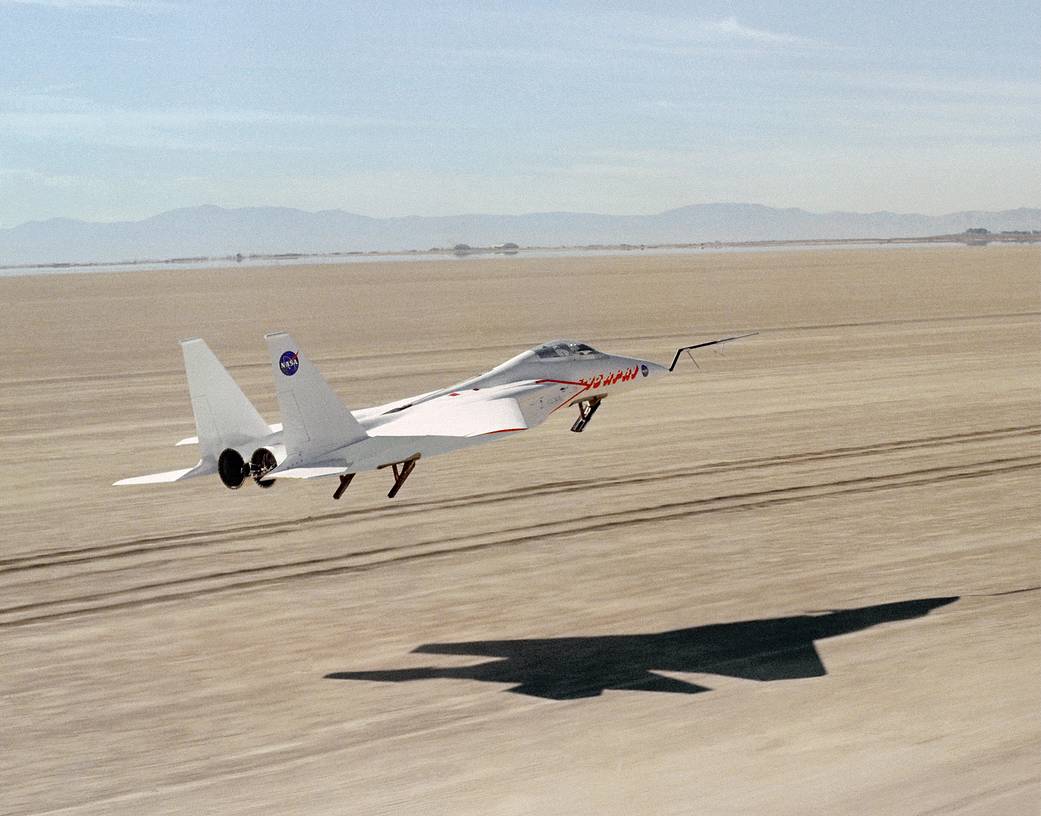NASA’s Drden Flight Research Center used a technique developed for flying Remotely Piloted Research Vehicles (RPRV) to flight test a 3/8-scale model of the USAF’s F-15 fighter aircraft. The F-15 RPRV was air launched from a B-52 flying at 45,000 feet and was controlled by a pilot in a ground cockpit complete with flight controls and a television screen.
In April of 1971, Assistant Secretary of the Air Force for Research and Development Grant Hanson sent a memorandum noting the comparatively small amount of research being conducted on stalls (losses of lift) and spins despite the yearly losses that they caused (especially of fighter aircraft). In the spring and summer of that year, NASA’s Flight Research Center (redesignated in 1976 the Dryden Flight Research Center, Edwards, California) studied the feasibility of conducting flight research with a sub-scale fighter-type Remotely Piloted Research Vehicle (RPRV) in the stall-spin regime. In November, NASA Headquarters approved flight research for a 3/8-scale F-15 RPRV. It would measure aerodynamic derivatives of the aircraft throughout its angle-of-attack range and compare them with those from wind tunnels and full-scale flight. (Angle of attack refers to the angle of the wings or fuselage with respect to the prevailing wind.)
The McDonnell Douglas Aircraft Co., builder of the full-size F-15, designed and constructed three 3/8-scale mostly fiberglass, unpowered F-15 RPRV’s for a little more than $250,000 apiece (compared with $6.8 million for a full-size F-15). The FRC set up a dedicated RPRV control facility in a room on the first floor next to the hangar for the RPRV and set up a much more sophisticated control system than was used for an earlier RPRV-the Hyper III. The control facility featured a digital uplink capability, a ground computer, a television monitor, and a telemetry system…Learn more
The F-15A Remotely Piloted Research Vehicle is currently on display at Armstrong Flight Research Center in Edwards, California.


























